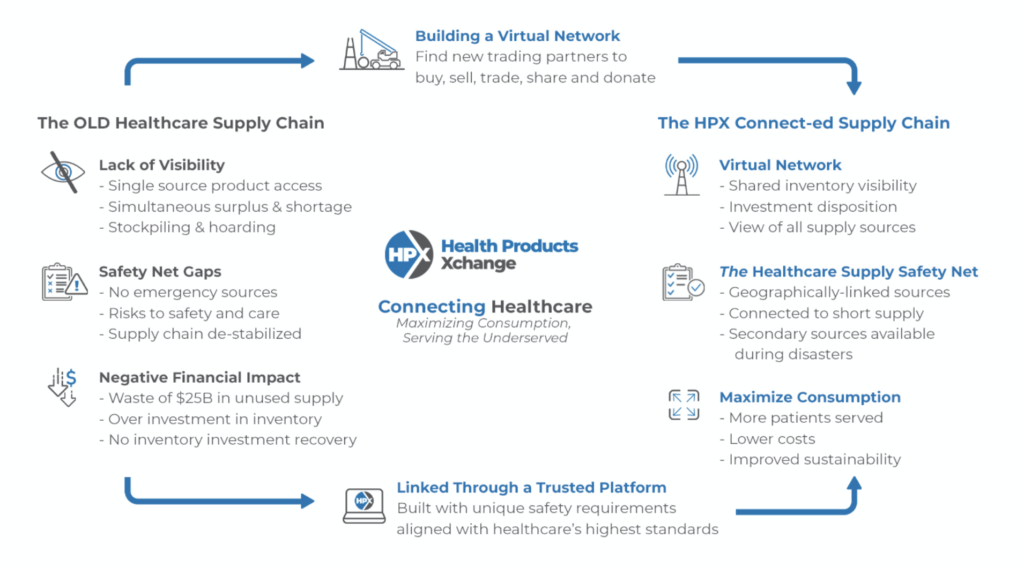The events of this year have shined a light on just how crucial it is for the healthcare industry to have an efficient and adaptable supply chain. It has also become readily apparent how important it is for the supply chain to be prepared to respond during a crisis… and just how unprepared the supply chain actually was.
So what can supply chain leaders do to reduce the impact of an unexpected crisis? How can we as an industry do a better job of working together to make sure that products go where they’re needed?
The solution is a Healthcare Product Safety Net that would paint an accurate picture of what product is located in where and in what quantities – all along the supply chain. In essence, it would create a complete understanding of the potential supply of a given product.

Here are the three main reasons why every IDN supply chain leader needs to understand what a healthcare product safety net is and why it is so important:
1) Alleviate shortages and supply disruptions
Shortages have always plagued the healthcare products supply chain, but during a crisis like this year’s COVID-19 pandemic, shortages are only one part of the larger problem. The other side of the coin was that many of the products just weren’t where they were needed and the people who had excess weren’t connected to the people who were in need.
A healthcare product safety net would ultimately serve as a way to give critical visibility across the entire supply chain by ensuring the participation of all participants within the ecosystem of healthcare. That includes distributors, manufacturers, hospitals, liquidators, etc. – any source where product could potentially be held and accessed would be connected under the framework of a safety net.
2) Minimize risk in your supply chain by increasing access to trusted sources
When the quality of your products are the difference between life and death, it’s pretty important to make sure you’re getting them from a trusted source.
However, relying on only one or two trusted sources can very quickly become a problem when something disrupts that source.
With a safety net, you don’t have to worry about quickly finding and securing a new, trusted source when a disruption occurs. By having a safety net, you have increased access to trusted, valid, credentialed suppliers to fall back on.
3) Supply disruptions are going to get worse
Shortages have plagued the industry long before the COVID-19 pandemic, but what we experienced this year was beyond anybody’s imagination.
The chance of supply disruptions and shortages in happening in the future is even greater. In the near term, COVID-19 has taken away manufacturers’ ability to forecast demand. The entire supply chain is upset – not just in this country, but globally.
Add to that the fact that the healthcare industry supply chain is affected by everything: geopolitical issues, pandemics, natural disasters, and so on, around the world. Our entire world now is structured around maximizing your sources to be able to de-risk your supplies.
The simple truth is that the pandemic exposed a lot vulnerabilities in the supply chain. Whether it’s a lack of holistic transparency into supply sources, a siloed approach to ordering and fulfillment, partnership challenges, or reliance on a small number of trusted sources, there is room for us to improve.
It is beyond time we started investing in a national healthcare product safety net so that we can all be better prepared for the inevitable crises of the future – both the smaller problems that have become routine and major ones like a global pandemic.
